Action in the North Atlantic

Brief Synopsis
Cast & Crew
Lloyd Bacon
Humphrey Bogart
Raymond Massey
Alan Hale
Julie Bishop
Ruth Gordon
Film Details
Technical Specs

Synopsis
Joe Rossi is chief executive officer on the Merchant Marine vessel captained by Steve Jarvis. When their ship is torpedoed by the Germans while traveling in the North Atlantic, Steve vows retribution. After Joe, Steve and the other survivors are rescued, they return home to wait for assignment to another ship. Steve's wife Sarah is glad to have him back, although she knows that waiting and worrying are part of being married to a seaman. Joe heads for his favorite bar, where he meets singer Pearl O'Neill, whom he marries shortly before he is recalled to sea. The men learn that their new ship, the Sea Witch , is to be part of an international convoy bringing supplies to Murmansk in the Soviet Union. As the convoy heads into the open sea, it is attacked by several German submarines. United States naval destroyers engage the submarines in battle, but one singles out the Sea Witch . Steve orders his men to lure the submarine away from the convoy. The submarine follows the Sea Witch just out of range of its guns, waiting for its chance to attack. Joe suggests that they cut the engines and maintain complete silence, hoping that the submarine's sound sensors will not be able to track them. The ruse works, but the captain of the submarine is able to determine where the ship is headed and radios a request for airborne bombers. The airplanes and the ship engage in a battle, during which Steve is seriously wounded and several other sailors are killed. When the submarine torpedoes the ship, Joe, who has been named acting captain, orders the men to start a fire, hoping to lure the submarine to the surface, where the ship's guns can hit them. After the submarine surfaces, Joe orders the ship to ram it, and the submarine is destroyed just before Russian airplanes appear overhead to welcome the Sea Witch and her crew.

Director

Lloyd Bacon
Cast

Humphrey Bogart
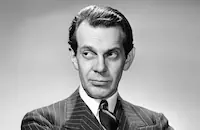
Raymond Massey

Alan Hale

Julie Bishop

Ruth Gordon

Sam Levene
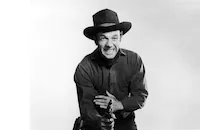
Dane Clark
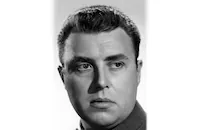
Peter Whitney

Dick Hogan

Minor Watson

J. M. Kerrigan
Kane Richmond
Art Foster
Chick Chandler
George Offerman Jr.
Ray Montgomery

Glen Strange
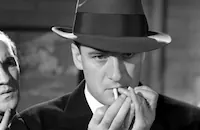
Elliott Sullivan

Ralph Dunn
Creighton Hale
Syd Saylor
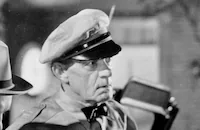
Lew Kelly
Dick Wessel
Russ Powell
Alec Craig
Frederick Giermann
Walter Soderling
Bill Crago
Joseph Bernard
Virginia Christine

Irving Bacon
Harry Seymour
Leah Baird

Jack Mower

Iris Adrian
George Kirby
Victor Kendall

Frank Puglia

Ludwig Stossel
Jean Del Val
Charles Trowbridge
Roland Varno
Daniel De Jonghe
Bill Nind
Sven-hugo Borg
Rudolf Myzet
Arthur Dulac
Carl Ekberg
Edward Foster
Carlos Barbé
Manuel Lopez
Archie Got
Pedro Regas
Henry Guttman
Tom Miller
William Haade
Dewolfe Hopper
George Neise
Al Winters
Sigurd Tor
Nari Drevjen
Tony Marsh
Gordon Hayes
Kirk Alyn
Juan Varro
George Blagoi
Sam Waagenaar
William Yetter
Peter Auerbach
George Adrian
Stanley Blystone
Edwin Mills
Alan Robert
George Sorel
Arno Frey
Bob Thom
Bob Duncan
Horace Brown
Carl Roth
Anthony Marlowe
Richard Woodruff
Walter Rode
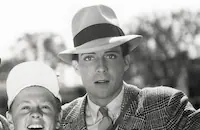
Dennis Moore
Eddie Coke
Richard Abbott
William Castello
Louis Arco

James Flavin

Kurt Kreuger
Fred Wolff
Hans Furburg
Rolf Lindau
Frank Mayo
Hugh Prosser
Gene O'donnell
Edward Dow

Lee Phelps

Don Douglas
Hooper Atchley
William Forrest
Hans Schumm
Grandon Rhodes
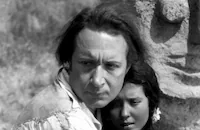
Monte Blue
Bill Edwards
Frank Mills
Herschel Graham

Paul Panzer
Bob Kimball
Cliff Saum
Gordon Murray
Bill Phillips
Frank Mayo
Eddy Chandler
Allen Mathews
Charles Sullivan
Harry Mckee
George Davis
Albert D'arno
Joe Ploski
Walter Thiele
Peter Pohlenz
Peter Van Eyck
Louis Adlon
John Royce
Ernst Hausserman
David Willock
John Estes
Gary Bruce
Robert Kent
Ross Ford
Earl Kent

Robert Stevenson
Paul Gilbert
Hans Von Morhart
Hans Heilbronne
Edward Goedeck
Kurt Neumann
Charles Flynn
George Sherwood
Peter Michael
Peter Dunne
Ferdinand Schumann-heink
Frank Alten
Sam Wren
Bill Hunter
Warren Ashe
John Whitney
Ted Jacques
Hal Craig
William Vaughn
John Epper
Otto Reichow
Hans Moebus

George O'hanlon

Warren Douglas
David Gaylord
Maurice Murphy

Joe Allen Jr.
Victor Kilian Jr.

Howard Mitchell
Janna Deloos
Vera Richkova
Christine Gordon
Crew
George Amy
A. I. Bezzerides
W. R. Burnett
Reggie Callow
Jack Cosgrove
Adolph Deutsch
Edwin B. Du Par
Leo F. Forbstein
Guy Gilpatric
John Howard Lawson
James Leicester
Ted Mccord
Cole Porter
C. A. Riggs
Don Siegel
Ted Smith
Clarence Steensen
Richard Sullivan
Jerry Wald
Jack L. Warner
Perc Westmore
Harold Winston

Photo Collections
Videos
Movie Clip




Trailer
Hosted Intro
Film Details
Technical Specs

Award Nominations
Best Writing, Screenplay
Articles
Action in the North Atlantic
Warner Bros. veteran Lloyd Bacon was assigned as director and the whole film was shot on a Warner sound stage. The film required a great deal of elaborate special effects that needed to be housed in a controlled environment that only a sound stage could provide. The old freighter that is destroyed in the film burned brightly for several days before sinking, all in a tank on the studio's "Stage Nine." The effect of the burning ships was achieved by dozens of gas jets controlled at a set of valves that looked like an organ console. This was operated by a "smoke bum" who played the valves with such precision that the actors appeared to be walking through flames. But others on the set got closer to the flames than comfort and safety would allow. Director Lloyd Bacon and his assistant often had to don masks because of the intense heat and smoke emanating from the arc lights and special effects fires and on one occasion Bacon almost choked to death from smoke inhalation. It's no wonder the special effects frightened many in the cast and crew and forced them to stay on their toes.
The production eventually went 45 days over schedule. Jerry Wald, completing his last movie before going into the service, produced a few ulcers as well. Some speculated whether it was the fear of military service that gave him ulcers, or the protracted production of Action in the North Atlantic. At the New York premiere, more than a dozen merchant mariners and several hundred U.S. sailors presented Jack Warner with the Merchant Marine Victory Flag. Henry J. Kaiser, the ship-building magnate, thought the film was such a morale booster that he wanted it shown to all his war builders.
Despite the undeniable patriotic fervor on display in Action in the North Atlantic, there was a politically combustible side to John Howard Lawson's screen story. Appearing in 1943 when America and Russia were still friendly allies, the film occasionally focused on our ties with the Soviet Union. But in the postwar era of chilly American-Russian relations, parts of the film would prove to be an embarrassment to Warner Brothers, namely the climactic "tovarich" (comrade) scene, in which the heroic Bogart and his men are greeted by Russians cheering wildly. Bogart does not return in kind, prompting a crewman to ask why he remains silent. Bogart says, "I'm just thinking about the trip back." That line served a dual purpose. Indeed, the trip back home would be rough going, but it also implied that the comrade stuff is acceptable up to a certain point. The Cold War validated the line's prescience. In fact, the line was often omitted from Action in the North Atlantic when it used to play on broadcast television.
But the Cold War's worst effect was not on a single line of dialogue in a wartime picture. It was its impact on the lives of filmmakers like John Howard Lawson whose career came to abrupt end in 1948 when, as one of the Hollywood Ten, he was sentenced to a year's imprisonment for refusing to cooperate with the House Un-American Activities Committee. Blacklisted by the film industry, Lawson continued to work while in self-exile in Mexico and authored several books on drama and cinema including Film: The Creative Process (1964).
Director: Lloyd Bacon, Byron Haskin (uncredited), Raoul Walsh (uncredited)
Producer: Jerry Wald, Jack L. Warner
Screenplay: A.I. Bezzerides, W.R. Burnett, Guy Gilpatric (story), John Howard Lawson
Cinematography: Ted McCord
Music: Adolph Deutsch, William Lava (uncredited)
Art Direction: Ted Smith
Cast: Humphrey Bogart (Lieutenant Joe Rossi), Raymond Massey (Captain Steve Jarvis), Alan Hale (Boot O'Hara), Julie Bishop (Pearl), Ruth Gordon (Mrs. Jarvis), Sam Levene (Chips Abrams).
BW-128m. Closed captioning.
by Scott McGee

Action in the North Atlantic
Quotes
Trivia
Director Lloyd Bacon's contract with Warner Bros. expired during production. Jack Warner told him, "finish the picture and we'll talk about it," but Bacon wasn't willing to continue without a contract. Warner fired him and brought in Byron Haskin to finish the film.
Notes
The film's working title was Heroes Without Uniforms. An undated press release included in the file on the film at the AMPAS Library notes that twenty-three-year-old technical advisor Richard Sullivan was one of two cadets to survive a U-Boat attack on his Merchant Marine vessel. Another press release announced that Edward G. Robinson and George Raft were to star in the picture. According to a June 24, 1943 Hollywood Reporter news item, this film was used in Merchant Marine schools as a part of their training sessions, because the War Shipping Administration believed that the film contained technical and educational material that would "aid considerably the training program." The studio donated three prints for official use at the Merchant Marine Academy in Kings Point, NY and at cadet basic schools in San Mateo, CA and Pass Christians, MI. According to a September 26, 1942 article in the Pittsburgh Courier, Humphrey Bogart wanted to include a black Merchant Marine captain in the film, stating: "In the world of the theatre or any other phase of American life, the color of a man's skin should have nothing to do with his rights in a land built upon the self-evident fact that all men are created equal." This character did not appear in the film, however. Writer Guy Gilpatric was nominated for an Oscar for Best Original Screenplay.
Modern sources add the following information about the production: Warner Bros. had originally intended to make a two-reel documentary about the Merchant Marine, but this idea was discarded as the war progressed, providing more opportunities for dramatic action footage. The film was shot entirely on the Warner Bros. backlot using special effects to provide the maritime atmosphere. Raymond Massey and Julie Bishop reprised their roles in a Lux Radio Theatre broadcast on May 15, 1944, co-starring George Raft.

Miscellaneous Notes
Released in United States 1943
Tony Gaudio replaced Ted McCord after the latter left production to join the Army.
Released in United States 1943















